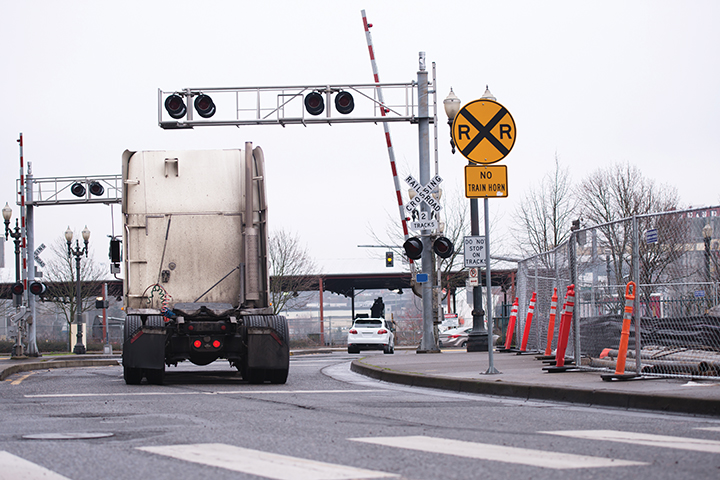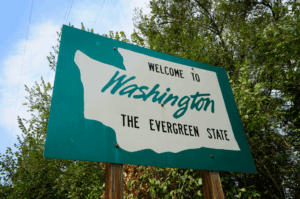There’s no question that many drivers have experienced frustration over emissions mandates by the Environmental Protection Agency (EPA) that have changed trucking. Both new and used trucks are now more expensive to purchase and to maintain, and many drivers can tell of stories time and money lost to problems caused by the new technology.
Then, there’s the initial distribution problems and increased price of changes to diesel fuel, such as the creation of low-sulfur fuel — followed by ultra-low-sulfur fuel.
A question that comes up frequently is, “Why are railroads excluded from these emissions mandates?” Some folks wonder if the rail industry gets special treatment from the government. Rail supporters point out that trains move freight more efficiently than trucks, arguing that emissions limits will have less impact per freight ton-mile.
Well, they’re right.
According to the Association of American Railroads (AAR), trains are three to four times more fuel efficient than trucks. The organization published “The Environmental Benefits of Moving Freight by Rail” in July 2019. In it, AAR claims that in 2018, U.S. freight railroads moved each ton of freight they hauled 473 miles for each gallon of fuel consumed.
Trucks, on the other hand, move the average ton of freight about 135 miles for each gallon of fuel. That makes trains about 3.5 times as efficient as trucks. To put it another way, trucks will burn about 3.5 times more fuel than trains when moving the same amount of freight. It follows that if both modes of transport were burning the same diesel fuel, trucks would emit 3.5 times the pollutants than trains to move the same amount of freight.
Of course, the answer to reducing emissions is not as simple as just moving freight by rail instead of trucks. Trucking supporters are quick to point out that there are no railroad tracks leading to the local Walmart or grocery warehouse.
So, just how much U.S. freight is moved by the various modes of transportation?
According to the Bureau of Transportation Statistics (BTS), part of the U.S. Department of Transportation, trucks hauled 11.5 billion tons of freight in 2017, the most current year for which statistics are available. That’s 64.6% of the freight hauled by all modes. Rail was responsible for 1.7 billion tons or 9.8% About 3 billion tons was moved by pipeline, 17.1% of all freight moved. Another 766 million tons, or 4.3%, moved over water, by barge or ship. Less than 6 million tons moved by air — that’s less than a tenth of a percent. The rest of the freight moved by multiple modes (intermodal), such as truck and rail or pipeline plus barge, unknown modes, or no domestic mode at all.
When considering rulemaking that impacts air quality, it’s understandable for the EPA to begin with the most-used mode of transportation. In 2017, trucks moved roughly 6.5 times as much freight as rail — nearly two-thirds of ALL the freight moved in the U.S. It also makes sense to address the mode that creates greater emissions. Again, that’s trucking.
However, all of this doesn’t mean the railroad industry hasn’t been impacted by
emissions standards. As with trucking, the EPA has taken notice of the rail industry, demanding better fuel economy and reduced emissions. And, like trucking, the rail industry has responded with improvements, such as replacing old power equipment with new, more fuel-efficient units, using computer technology to maximize performance, reducing equipment idling, and training employees to be more aware of fuel efficiency. Sound familiar?
Finally, it should be noted that railroads weren’t ignored by the EPA as rules governing trucks were being implemented. Due to different operating factors, including the cost and lifespan of new locomotives, the rail industry was addressed under separate rulemaking.
The agency issued a regulatory announcement in March 2008 that specifically addresses rail and marine diesel emissions. The rule mandates about a 90% reduction in particulate matter and 80% in NOx (nitric oxide, nitrogen dioxide) emissions. Also mandated is use of ultra-low-sulfur diesel fuel in new locomotives by 2015, using high-efficiency catalytic aftertreatment — the same technology that brought diesel exhaust fluid (DEF) to trucking.
Locomotives aren’t replaced as often as trucks, so it will take longer for railroads to achieve complete turnover to units meeting the tighter emissions standards. The EPA estimates it will take until 2030 to achieve full effect.
But for those who were wondering, the rail industry didn’t get a pass when new emissions standards were imposed on trucking. They simply got a ruling of their own.
Editor’s note: This story was inspired by a letter to the editor asking for more information about railroad regulations since trucks seem to be the go-to source to receive blame for emissions. If you have a topic you would like The Trucker staff to tackle, send an email to editor@thetrucker.com.
Cliff Abbott is an experienced commercial vehicle driver and owner-operator who still holds a CDL in his home state of Alabama. In nearly 40 years in trucking, he’s been an instructor and trainer and has managed safety and recruiting operations for several carriers. Having never lost his love of the road, Cliff has written a book and hundreds of songs and has been writing for The Trucker for more than a decade.








